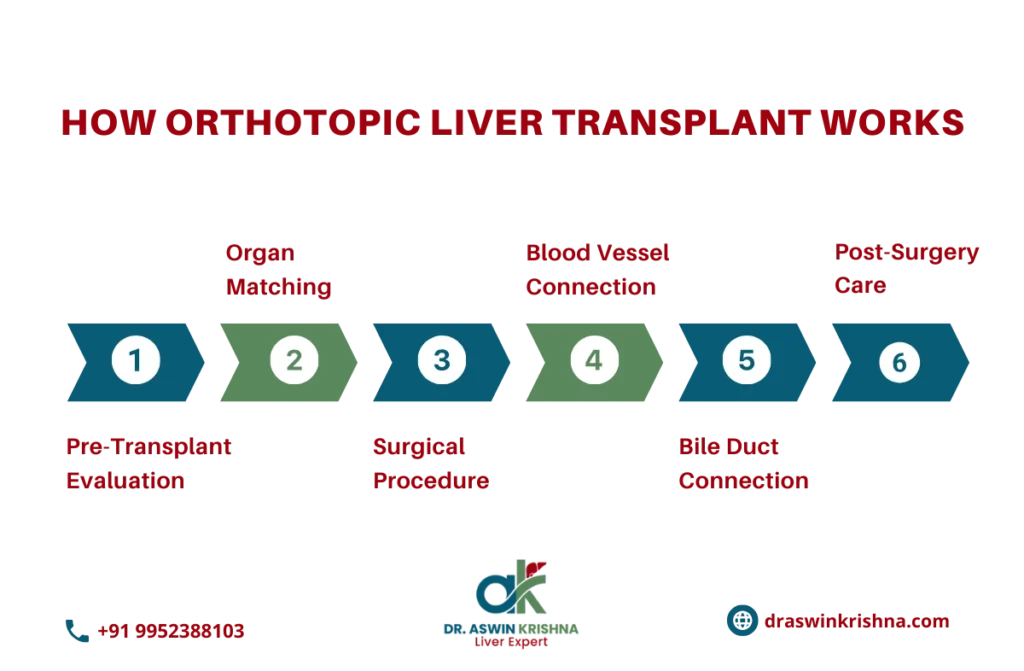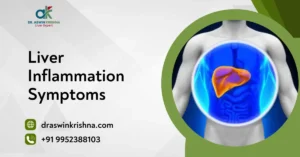Liver transplant is a critical procedure that can save the lives of individuals with severe liver disease. There are several types of liver transplant available, each suited to different medical conditions. In India, people often explore options like a liver donor in India or choosing a liver hospital in India with specialized care to ensure the best outcomes. Understanding the types of liver transplant can help patients make informed decisions. This article will explore the main types of liver transplant procedures, including orthotopic transplant, living donor transplant, and split liver transplant, and their advantages and risks.
We’ll also touch on the process of liver donation from deceased donors. For patients seeking the best liver transplant in India, understanding these types is crucial for selecting the right treatment plan.
Three Types of Liver Transplant
There are mainly three types of liver transplants:
- Orthotopic transplant
- Living donor transplant
- Split liver transplant
Each of these types of liver transplant serves different purposes, depending on whether the patient needs a full liver or part of it. The choice of transplant type depends on the patient’s condition and the availability of liver donors. Hospitals in India offer specialized liver transplant services to cater to the growing demand for such life-saving procedures.

Orthotopic Transplant
An orthotopic liver transplant is the most common type, where the diseased liver is removed and replaced with a healthy liver from either a living or deceased donor. This procedure is often recommended for individuals suffering from end-stage liver disease, cirrhosis, or liver cancer. During the surgery, the surgeon removes the old liver and places the donor liver in the same position. This type of liver transplant is known for offering excellent survival rates when performed in a top liver hospital in India.
Some benefits of orthotopic liver transplant include:
- Improved liver function and overall health
- Increased life expectancy after surgery
- Enhanced quality of life post-transplant
However, it comes with risks such as organ rejection and the need for lifelong immunosuppressive medications to prevent the body from rejecting the new liver. Patients considering an orthotopic liver transplant should consult with a liver donor in India to explore options for donor availability and the liver transplant process.
Living Donor Transplant
A living donor transplant involves the donation of a portion of the liver from a living person, typically a relative or close friend. The donor’s liver regenerates within a few months, making this a feasible option for liver transplantation. In this type of liver transplant, the surgeon removes a part of the donor’s liver and transplants it into the recipient, where it will eventually grow to normal size.
Some key advantages include:
- Shorter waiting times for patients
- Greater control over the donation process
- Potentially lower risk of organ rejection compared to deceased donors
However, the donor must be thoroughly evaluated to ensure they are healthy enough to undergo the procedure. As this type of liver transplant relies on voluntary donors, it may not always be possible to find a suitable match. India’s best liver transplant centers are equipped to handle these sensitive procedures with care and safety protocols.
Split Liver Transplant
In a split liver transplant, a liver from a deceased donor is divided into two portions, typically to be transplanted into two recipients. This type of liver transplant is often used when the donor liver is large enough to be split into two viable parts. The procedure helps maximize the use of available livers, particularly when there are many patients waiting for a transplant.
Advantages of split liver transplant:
- Optimized use of donor organs
- Potential to save more lives
- Ideal for pediatric and adult recipients
However, split liver transplants come with challenges, including the complexity of the procedure and the increased risk of complications. The best liver transplant centers in India have advanced technology and skilled surgeons to manage these challenges and ensure successful outcomes for both patients.
How are Livers from Deceased Donors Transplanted?
When a liver donor in India passes away and has agreed to donate their liver, the organ is carefully preserved and transported to the recipient’s transplant center. The transplant procedure is then carried out according to the following process:
- Matching: The recipient is matched with the liver based on blood type, size, and medical condition.
- Preparation: The liver is preserved in a cold storage solution to keep it viable.
- Transplant: The diseased liver is removed and replaced with the donor’s liver.
- Recovery: Post-surgery, the recipient is closely monitored to prevent rejection.
Deceased donor transplants are crucial for people on long waiting lists and are often life-saving. Liver hospital in India are highly skilled in performing these complex procedures, ensuring high success rates.
What Kind of Liver Diseases Require Liver Transplantation?
- Liver transplantation is considered when severe liver damage prevents the organ from performing its essential functions. The most frequent reasons for liver transplant include cirrhosis from hepatitis B or C, alcoholic liver disease, and non-alcoholic fatty liver disease, all leading to irreversible scarring.
- Acute liver failure caused by toxins, drugs like acetaminophen, or sudden viral infections can progress rapidly, leaving transplantation as the only life-saving option. In such emergencies, doctors assess quickly whether can liver transplant be done depending on organ availability.
- Genetic and metabolic conditions like Wilson’s disease and hemochromatosis often damage the liver irreversibly. In these cases, only certain types of liver transplant surgery provide hope for long-term survival.
- Selected patients with hepatocellular carcinoma confined to the liver may also qualify. Here, how does a liver transplant work is to remove both cancer and diseased tissue, offering a curative option.
- Ultimately, different types of liver transplant—living donor or deceased donor—are chosen based on patient condition. The decision balances urgency, donor suitability, and whether liver transplant surgery time is favorable for safe intervention.
Eligibility Criteria for Living Liver Donor
- Living donor transplantation requires strict selection criteria to ensure the donor’s safety. Donors are generally between 18 and 55 years of age, in excellent health, and free from chronic illnesses like diabetes or cancer.
- Blood type compatibility and adequate liver volume are essential. These factors reduce surgical complications and support both donor recovery and the recipient’s survival after surgery.
- Since certain types of liver transplant surgery involve splitting the donor’s liver, precise imaging is done. This ensures that enough healthy liver tissue remains for both individuals.
- Psychological evaluation is equally important. Donors must understand the risks, recovery process, and emotional aspects of the procedure, without any external pressure.
- Doctors thoroughly analyze whether can liver transplant be done safely for both donor and recipient. Protecting the donor’s well-being is always prioritized, even when considering urgent reasons for liver transplant.
What is the Cost of a Liver Transplant?
- The cost of a transplant includes pre-surgery tests, hospital stay, surgical charges, and intensive care. It also accounts for liver transplant surgery time, which varies depending on complexity and medical challenges.
- Patients undergoing living donor transplantation may face higher costs. This is due to dual surgeries involving both the donor and the recipient.
- Expenses extend beyond the procedure itself. Long-term immunosuppressive medications and follow-up appointments are lifelong commitments.
- The cost can differ depending on the types of liver transplant, such as living donor, deceased donor, or split liver procedures. Each carries unique medical and financial considerations.
- Families often ask, how does a liver transplant work financially and medically. While insurance may cover some costs, out-of-pocket expenses remain significant, especially in the case of complex reasons for liver transplant.
Liver Transplant Tests
- Pre-transplant testing ensures that liver transplant surgery time is managed safely and efficiently. Blood tests evaluate liver, kidney, and clotting function to guide surgical planning.
- Imaging such as MRI, CT scans, or ultrasound provides detailed liver anatomy. These scans also identify blockages or tumors that may affect transplant outcomes.
- A liver biopsy may be performed to assess disease severity. This gives doctors essential information on the extent of damage and suitability for surgery.
- Cardiovascular and respiratory tests confirm if the patient can withstand anesthesia. Infection screening ensures no hidden risks jeopardize the transplant.
- These evaluations determine the most suitable types of liver transplant for the patient. They also provide clarity on whether can liver transplant be done and how does a liver transplant work in improving long-term health outcomes.
How Do Doctors Decide if You Need a Liver Transplant?
- Doctors rely on clinical findings and scores like MELD to evaluate severity. A higher score indicates more urgent need for transplantation.
- Symptoms such as jaundice, fluid buildup, confusion, or repeated bleeding episodes signal advanced disease. At this point, medical therapy offers little benefit.
- The presence of liver cancer limited to the organ is also a key factor. Transplantation here removes both tumor and diseased liver tissue.
- Specialists explain how does a liver transplant work for each individual, highlighting benefits and possible risks. This ensures informed patient decision-making.
- The choice between different types of liver transplant surgery depends on donor availability. Doctors carefully assess if can liver transplant be done safely while meeting urgent reasons for liver transplant.
End-Stage Liver Disease
- Depending on the situation, different types of liver transplant surgery such as living donor or deceased donor are considered. Families are also guided through how does a liver transplant work and whether can liver transplant be done effectively.
- End-stage liver disease occurs when the liver loses its ability to function or regenerate. Common causes include cirrhosis from hepatitis, alcoholism, and metabolic liver disorders.
- Symptoms include jaundice, confusion, recurrent bleeding, and fluid accumulation. These signs confirm irreversible failure that can only be treated with transplantation.
- At this point, reasons for liver transplant are medically unavoidable. Doctors weigh the urgency of surgery against the patient’s ability to withstand the procedure.
- Organ availability and liver transplant surgery time become crucial factors. Any delay can worsen the condition and reduce survival chances.
Conclusion
The types of liver transplant — orthotopic transplant, living donor transplant, and split liver transplant — each offer unique solutions for those suffering from liver failure. Choosing the right type of transplant depends on several factors such as liver donor availability, patient health, and transplant center expertise. Liver hospital in India are among the top providers of liver transplant services, ensuring high success rates and the best outcomes for patients. Those seeking the best liver transplant in India should consult with medical professionals to explore their options and ensure they receive the highest level of care.



